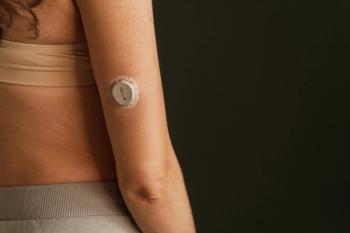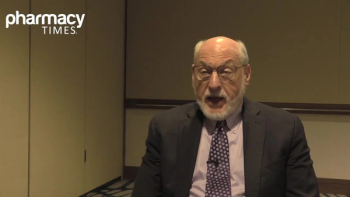
Keeping an Eye on Diabetic Retinopathy
This article is brought to you by Lilly
The Centers for Disease Controland Prevention estimatesthat approximately 21 millionpeople in the United States have type1 or type 2 diabetes mellitus (bothdiagnosed and undiagnosed).1 Therefore,a large portion of the patientswhom a pharmacist may encounterwill have diabetes. It is important forpharmacists to note that tightglycemic control slows the progressionof chronic complications. Thisoutcome was shown in the UnitedKingdom Prospective Diabetes Studyand the Diabetes Control and ComplicationsTrial.2,3
Long-term complications of diabetesinclude macrovascular complications(involving the large bloodvessels), which may lead to heartattack, stroke, and peripheral vasculardisease,4 and microvascularcomplications (involving the smallblood vessels), which can lead todiabetic neuropathy, nephropathy,and retinopathy.4
What Is DiabeticRetinopathy?
Diabetic retinopathy (DR), the mostcommon cause of adult blindness inthe United States, occurs in 4 of every10 people with diabetes and causes12,000 to 24,000 new cases of blindnesseach year.1,5,6 DR involves damageto the retina (Figure) due tohyperglycemia.7-10 Although there aremany proposed mechanisms leadingto retinal microvascular damage, thecommon link between all of theminvolves the buildup of glucose(hyperglycemia).
Hyperglycemia damages the wallsof the microvascular system in theretina, causing the retina to leak fluid(microaneurysm). These microaneurysmsblock blood and oxygen fromreaching the retina. To compensate,the retina signals growth hormone tomake new blood vessels (neovascularization).Unfortunately, these newvessels are thin and brittle and maybreak easily. If the new blood vesselsbreak, blood leaks into the retina, causingmore vision loss (intraretinal/vitreous/preretinal hemorrhages). To stopthe bleeding, the body forms scar tissue(retinal scarring). Scar tissue cancontract and cause a retinal detachment(separation of the retina's sensoryand pigment layers). As a result,severe vision loss or permanent blindnessmay occur.
What Are the Symptoms?
The longer the duration of diabetes,the higher the risk of developing DR.6Patients with DR often have no warningsigns of vision loss. Early symptomsof DR may include7,10:
- Blurred or cloudy vision
- Pain or pressure in the eyes
- Seeing double
- Redness in the eyes that persists
- Tunnel vision
- "Floaters," "black spots," "cobwebs,"or "flashing lights"
- Straight lines that do not lookstraight
- Difficulty seeing in dim light
What Is the Progression?
DR has 2 stages: (1) nonproliferativeand (2) proliferative. In the nonproliferativestage, DR is classifiedaccording to severity as mild, moderate,or severe (Table 110). As DRprogresses, the amount of swellingof the retina and the damage to theeye increases. In nonproliferativeDR, no evidence of retinal neovascularizationis apparent.
In proliferative DR, extensive retinalneovascularization is visible.Both stages can cause vision loss.
How Can DR Be Prevented?
The National Diabetes EducationProgram (NDEP) recommends treatmentgoals for the ABCs (A1C, BloodPressure, and Cholesterol) of diabetes.9 Studies have shown thatachievement of ABC goals lowers thechances of developing DR2-6 (Table 2).Early detection and treatment canreduce severe vision loss by up to60%.1 Screening for DR should occurat least every year for patients withdiabetes.
How Can DR Be Treated?
The best treatment for DR is prevention.Some patients who are notachieving their ABC goals may developDR. DR can be treated by4-7,10,11:
- Scatter laser treatment?1000 to2000 burns from a laser beam arescattered throughout the retinato stop the growth of abnormalblood vessels in proliferative DR.
- Focal laser treatment?Lasers aredirected at specific focal areas ofthe retina to seal fluid leaks.
What Is the Pharmacist'sRole in Preventing DR?
The pharmacist can recommendsight-saving tips?such as achievingand maintaining acceptable glucose,blood pressure, and cholesterol levels?by encouraging medication adherence.The pharmacist also canhelp with patient education and counselingon the importance of regulardiet and exercise and keeping regulareye appointments. In addition, thepharmacist can communicate withother health care providers to ensurethe achievement of ABC goals.
Dr. Throm is an assistant professor of pharmacy practice at Midwestern University College of Pharmacy-Glendale, Glendale, Arizona.
For a list of references, send a stamped,self-addressed envelope to: ReferencesDepartment, Attn. A. Rybovic, PharmacyTimes, Ascend Media Healthcare, 103College Road East, Princeton, NJ 08540;or send an e-mail request to:arybovic@ascendmedia.com.
Newsletter
Stay informed on drug updates, treatment guidelines, and pharmacy practice trends—subscribe to Pharmacy Times for weekly clinical insights.



















































































































































































































